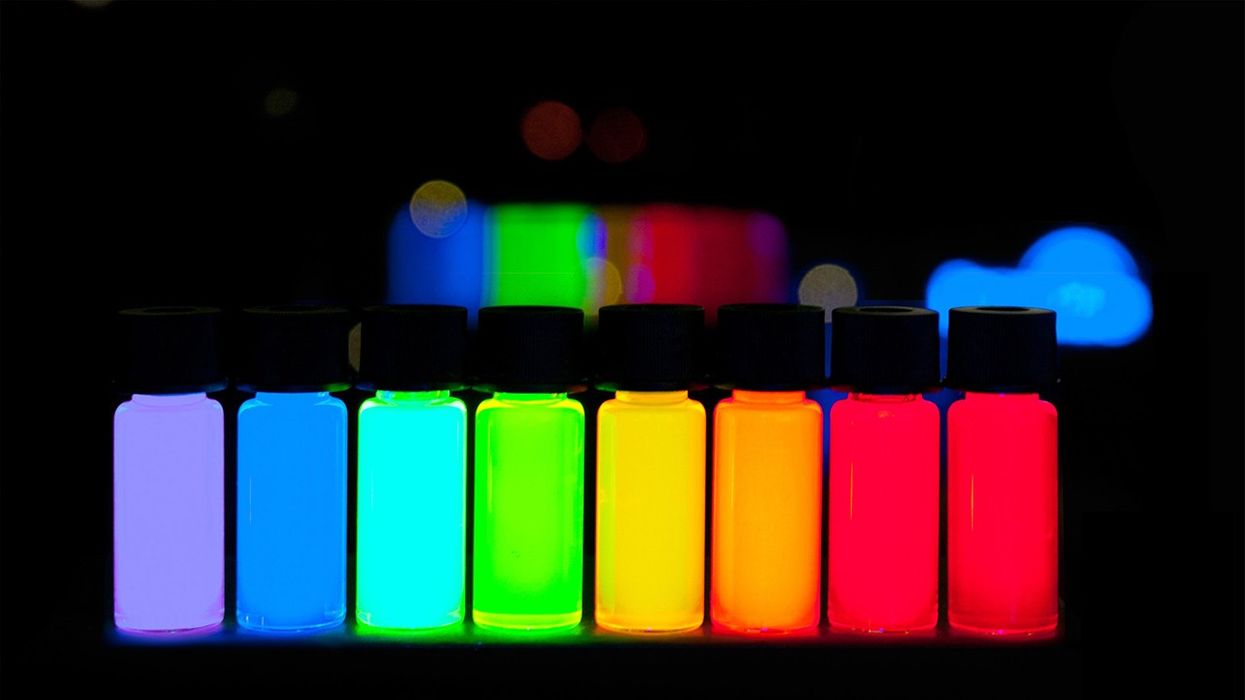Known More for TV, Could Quantum Dot Technology Replace CMOS Sensors?
Researchers in South Korea are saying the tech could produce more accurate colors and peak brightness than standard sensors.

Could Quantum Dot (QD) technology really replace CMOS sensors?
You may be familiar with QD technology from certain brands of televisions, such as those from Samsung, Vizio, and Hisense. That technology is known as QLED.
QLEDs are made up of nano-particle crystals that are visible only under a microscope (under 500 nanometers) and emit a range of colors depending on the number of atoms they have. They don't utilize traditional white backlight. QLEDs emit either a red or green light when struck by blue light. The resulting colors are much more accurate and vivid and can be tuned to release specific wavelengths to give the most accurate color production.
Check out ViewSonic's Quantum Dot explainer for more information.
But when it comes to imaging, the researchers at Chung-Ang University in South Korea believe Quantum Dot technology will be able to replace CMOS sensors. That's because a QD sensor in a camera will accurately acquire perfect colors and peak brightness, with the resulting footage allegedly beating the best CMOS sensors available.
If you want to get super nerdy and read the paper, you can find it here. But it'll cost you.
Let's Talk Sensors
A CMOS sensor has a photodetector cell for each individual color—red, green, blue—which are laid out laterally and very close together. The colors are independent of each other in each pixel, and there is a specific pixel density.
With the new sensor technology, the quantum dots are stacked vertically and can be tuned to certain light frequencies. The result is much more accurate color, peak brightness, and even higher resolutions (which can greatly benefit medical imaging). There are 5,500 devices per square centimeter, according to research (via Advanced Materials), rather than up to 1,600 devices per square centimeter with CMOS.
While medical and other industrial imaging can take full advantage of Quantum Dot imaging sensor technology, for cinematographers, the technology could really change how footage will look. With that many QD devices per square centimeter, not only will colors and brightness look great, but blacks will be more accurate, and there will be even more sensitivity to light.
One question that some may consider is if the technology will solve rolling shutter issues that plague CMOS.

Apple was very interested in Quantum Dot technology and was reportedly a client of Nanoco in the UK, but canceled the QD project in 2019. They saw the technology as cost-prohibitive to produce on a mass scale, per BlueFin Research. But when the cost isn't an issue, like with ARRI and RED cameras, this could be an interesting avenue to explore.
Also, if it's widely adopted in other imaging technology, including the above-mentioned medical and industrial, it should become more affordable for camera manufacturers to include it in their future cameras, though it would be reasonable to assume the high-end companies will use it first.
Check out weekly specials, deals, and rebates: Pro Video Gear, Pro Audio Gear, Lighting
Source: Advanced Materials












